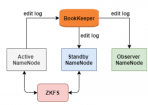

作者 | 李秋键
责编 | Carol
封图 | CSDN 下载自视觉中国
近几年来GAN图像生成应用越来越广泛,其中主要得益于GAN 在博弈下不断提高建模能力,最终实现以假乱真的图像生成。GAN 由两个神经网络组成,一个生成器和一个判别器组成,其中生成器试图产生欺骗判别器的真实样本,而判别器试图区分真实样本和生成样本。这种对抗博弈下使得生成器和判别器不断提高性能,在达到纳什平衡后生成器可以实现以假乱真的输出。
其中GAN 在图像生成应用最为突出,当然在计算机视觉中还有许多其他应用,如图像绘画,图像标注,物体检测和语义分割。在自然语言处理中应用 GAN 的研究也是一种增长趋势,如文本建模,对话生成,问答和机器翻译。然而,在 NLP 任务中训练 GAN 更加困难并且需要更多技术,这也使其成为具有挑战性但有趣的研究领域。
而今天我们就将利用CC-GAN训练将侧脸生成正脸的模型,其中迭代20次结果如下:


实验前的准备
首先我们使用的python版本是3.6.5所用到的模块如下:tensorflow用来模型训练和网络层建立;numpy模块用来处理矩阵运算;OpenCV用来读取图片和图像处理;os模块用来读取数据集等本地文件操作。

素材准备
其中准备训练的不同角度人脸图片放入以下文件夹作为训练集,如下图可见:

测试集图片如下可见:


模型搭建
原始GAN(GAN 简介与代码实战)在理论上可以完全逼近真实数据,但它的可控性不强(生成小图片还行,生成的大图片可能是不合逻辑的),因此需要对gan加一些约束,能生成我们想要的图片,这个时候,CGAN就横空出世了。其中CCGAN整体模型结构如下:

1、网络结构参数的搭建:
首先是定义标准化、激活函数和池化层等函数:Batch_Norm是对其进行规整,是为了防止同一个batch间的梯度相互抵消。其将不同batch规整到同一个均值0和方差1。InstanceNorm是将输入在深度方向上减去均值除以标准差,可以加快网络的训练速度。
def instance_norm(x, scope='instance_norm'):
return tf_contrib.layers.instance_norm(x, epsilon=1e-05, center=True, scale=True, scope=scope)
def batch_norm(x, scope='batch_norm'):
return tf_contrib.layers.batch_norm(x, decay=0.9, epsilon=1e-05, center=True, scale=True, scope=scope)
def flatten(x) :
return tf.layers.flatten(x)
def lrelu(x, alpha=0.2):
return tf.nn.leaky_relu(x, alpha)
def relu(x):
return tf.nn.relu(x)
def global_avg_pooling(x):
gap = tf.reduce_mean(x, axis=[1, 2], keepdims=True)
return gap
def resblock(x_init, c, scope='resblock'):
with tf.variable_scope(scope):
with tf.variable_scope('res1'):
x = slim.conv2d(x_init, c, kernel_size=[3,3], stride=1, activation_fn = None)
x = batch_norm(x)
x = relu(x)
with tf.variable_scope('res2'):
x = slim.conv2d(x, c, kernel_size=[3,3], stride=1, activation_fn = None)
x = batch_norm(x)
return x + x_init
然后是卷积层的定义:
def conv(x, c):
x1 = slim.conv2d(x, c, kernel_size=[5,5], stride=2, padding = 'SAME', activation_fn=relu)
# print(x1.shape)
x2 = slim.conv2d(x, c, kernel_size=[3,3], stride=2, padding = 'SAME', activation_fn=relu)
# print(x2.shape)
x3 = slim.conv2d(x, c, kernel_size=[1,1], stride=2, padding = 'SAME', activation_fn=relu)
# print(x3.shape)
out = tf.concat([x1, x2, x3],axis = 3)
out = slim.conv2d(out, c, kernel_size=[1,1], stride=1, padding = 'SAME', activation_fn=None)
# print(out.shape)
return out
生成器函数定义:
def mixgenerator(x_init, c, org_pose, trg_pose):
reuse = len([t for t in tf.global_variables() if t.name.startswith('generator')]) > 0
with tf.variable_scope('generator', reuse = reuse):
org_pose = tf.cast(tf.reshape(org_pose, shape=[-1, 1, 1, org_pose.shape[-1]]), tf.float32)
print(org_pose.shape)
org_pose = tf.tile(org_pose, [1, x_init.shape[1], x_init.shape[2], 1])
print(org_pose.shape)
x = tf.concat([x_init, org_pose], axis=-1)
print(x.shape)
x = conv(x, c)
x = batch_norm(x, scope='bat_norm_1')
x = relu(x)#64
print('----------------')
print(x.shape)
x = conv(x, c*2)
x = batch_norm(x, scope='bat_norm_2')
x = relu(x)#32
print(x.shape)
x = conv(x, c*4)
x = batch_norm(x, scope='bat_norm_3')
x = relu(x)#16
print(x.shape)
f_org = x
x = conv(x, c*8)
x = batch_norm(x, scope='bat_norm_4')
x = relu(x)#8
print(x.shape)
x = conv(x, c*8)
x = batch_norm(x, scope='bat_norm_5')
x = relu(x)#4
print(x.shape)
for i in range(6):
x = resblock(x, c*8, scope = str(i)+"_resblock")
trg_pose = tf.cast(tf.reshape(trg_pose, shape=[-1, 1, 1, trg_pose.shape[-1]]), tf.float32)
print(trg_pose.shape)
trg_pose = tf.tile(trg_pose, [1, x.shape[1], x.shape[2], 1])
print(trg_pose.shape)
x = tf.concat([x, trg_pose], axis=-1)
print(x.shape)
x = slim.conv2d_transpose(x, c*8, kernel_size=[3, 3], stride=2, activation_fn=None)
x = batch_norm(x, scope='bat_norm_8')
x = relu(x)#8
print(x.shape)
x = slim.conv2d_transpose(x, c*4, kernel_size=[3, 3], stride=2, activation_fn=None)
x = batch_norm(x, scope='bat_norm_9')
x = relu(x)#16
print(x.shape)
f_trg =x
x = slim.conv2d_transpose(x, c*2, kernel_size=[3, 3], stride=2, activation_fn=None)
x = batch_norm(x, scope='bat_norm_10')
x = relu(x)#32
print(x.shape)
x = slim.conv2d_transpose(x, c, kernel_size=[3, 3], stride=2, activation_fn=None)
x = batch_norm(x, scope='bat_norm_11')
x = relu(x)#64
print(x.shape)
z = slim.conv2d_transpose(x, 3 , kernel_size=[3,3], stride=2, activation_fn = tf.nn.tanh)
f = tf.concat([f_org, f_trg], axis=-1)
print(f.shape)
return z, f
下面还有判别器等函数定义,不加赘述。
2、VGG程序设立:
VGG模型网络层的搭建:
def build(self, rgb, include_fc=False):
"""
load variable from npy to build the VGG
input format: bgr image with shape [batch_size, h, w, 3]
scale: (-1, 1)
"""
start_time = time.time()
rgb_scaled = (rgb + 1) / 2 # [-1, 1] ~ [0, 1]
# blue, green, red = tf.split(axis=3, num_or_size_splits=3, value=rgb_scaled)
# bgr = tf.concat(axis=3, values=[blue - VGG_MEAN[0],
# green - VGG_MEAN[1],
# red - VGG_MEAN[2]])
self.conv1_1 = self.conv_layer(rgb_scaled, "conv1_1")
self.conv1_2 = self.conv_layer(self.conv1_1, "conv1_2")
self.pool1 = self.max_pool(self.conv1_2, 'pool1')
self.conv2_1 = self.conv_layer(self.pool1, "conv2_1")
self.conv2_2 = self.conv_layer(self.conv2_1, "conv2_2")
self.pool2 = self.max_pool(self.conv2_2, 'pool2')
self.conv3_1 = self.conv_layer(self.pool2, "conv3_1")
self.conv3_2_no_activation = self.no_activation_conv_layer(self.conv3_1, "conv3_2")
self.conv3_2 = self.conv_layer(self.conv3_1, "conv3_2")
self.conv3_3 = self.conv_layer(self.conv3_2, "conv3_3")
self.conv3_4 = self.conv_layer(self.conv3_3, "conv3_4")
self.pool3 = self.max_pool(self.conv3_4, 'pool3')
self.conv4_1 = self.conv_layer(self.pool3, "conv4_1")
self.conv4_2 = self.conv_layer(self.conv4_1, "conv4_2")
self.conv4_3 = self.conv_layer(self.conv4_2, "conv4_3")
self.conv4_4_no_activation = self.no_activation_conv_layer(self.conv4_3, "conv4_4")
self.conv4_4 = self.conv_layer(self.conv4_3, "conv4_4")
self.pool4 = self.max_pool(self.conv4_4, 'pool4')
self.conv5_1 = self.conv_layer(self.pool4, "conv5_1")
self.conv5_2 = self.conv_layer(self.conv5_1, "conv5_2")
self.conv5_3 = self.conv_layer(self.conv5_2, "conv5_3")
self.conv5_4_no_activation = self.no_activation_conv_layer(self.conv5_3, "conv5_4")
self.conv5_4 = self.conv_layer(self.conv5_3, "conv5_4")
self.pool5 = self.max_pool(self.conv5_4, 'pool5')
if include_fc:
self.fc6 = self.fc_layer(self.pool5, "fc6")
assert self.fc6.get_shape().as_list()[1:] == [4096]
self.relu6 = tf.nn.relu(self.fc6)
self.fc7 = self.fc_layer(self.relu6, "fc7")
self.relu7 = tf.nn.relu(self.fc7)
self.fc8 = self.fc_layer(self.relu7, "fc8")
self.prob = tf.nn.softmax(self.fc8, name="prob")
self.data_dict = None
print(("Finished building vgg19: %ds" % (time.time() - start_time)))
池化层、卷积层函数的定义:
def avg_pool(self, bottom, name):
return tf.nn.avg_pool(bottom, ksize=[1, 2, 2, 1], strides=[1, 2, 2, 1], padding='SAME', name=name)
def max_pool(self, bottom, name):
return tf.nn.max_pool(bottom, ksize=[1, 2, 2, 1], strides=[1, 2, 2, 1], padding='SAME', name=name)
def conv_layer(self, bottom, name):
with tf.variable_scope(name):
filt = self.get_conv_filter(name)
conv = tf.nn.conv2d(bottom, filt, [1, 1, 1, 1], padding='SAME')
conv_biases = self.get_bias(name)
bias = tf.nn.bias_add(conv, conv_biases)
relu = tf.nn.relu(bias)
return relu
def no_activation_conv_layer(self, bottom, name):
with tf.variable_scope(name):
filt = self.get_conv_filter(name)
conv = tf.nn.conv2d(bottom, filt, [1, 1, 1, 1], padding='SAME')
conv_biases = self.get_bias(name)
x = tf.nn.bias_add(conv, conv_biases)
return x
def fc_layer(self, bottom, name):
with tf.variable_scope(name):
shape = bottom.get_shape().as_list()
dim = 1
for d in shape[1:]:
dim *= d
x = tf.reshape(bottom, [-1, dim])
weights = self.get_fc_weight(name)
biases = self.get_bias(name)
# Fully connected layer. Note that the '+' operation automatically
# broadcasts the biases.
fc = tf.nn.bias_add(tf.matmul(x, weights), biases)
return fc
def get_conv_filter(self, name):
return tf.constant(self.data_dict[name][0], name="filter")
def get_bias(self, name):
return tf.constant(self.data_dict[name][1], name="biases")
def get_fc_weight(self, name):
return tf.constant(self.data_dict[name][0], name="weights")

模型的训练
设置GPU加速训练,需要配置好CUDA环境,并按照tensorflow-gpu版本。
os.environ["CUDA_VISIBLE_DEVICES"] = "0"
config = tf.ConfigProto()
config.gpu_options.allow_growth = True
tf.reset_default_graph()
model = Sequential() #创建一个神经网络对象
#添加一个卷积层,传入固定宽高三通道的
数据集读取和训练批次的划分:
imagedir = './data/'
img_label_org, label_trg, img = reader.images_list(imagedir)
epoch = 800
batch_size = 10
total_sample_num = len(img_label_org)
if total_sample_num % batch_size == 0:
n_batch = int(total_sample_num / batch_size)
else:
n_batch = int(total_sample_num / batch_size) + 1
输入输出神经元和判别器等初始化:
org_image = tf.placeholder(tf.float32,[None,128,128,3], name='org_image')
trg_image = tf.placeholder(tf.float32,[None,128,128,3], name='trg_image')
org_pose = tf.placeholder(tf.float32,[None,9], name='org_pose')
trg_pose = tf.placeholder(tf.float32,[None,9], name='trg_pose')
gen_trg, feat = model.mixgenerator(org_image, 32, org_pose, trg_pose)
out_trg = model.generator(feat, 32, trg_pose)
#D_ab
D_r, real_logit, real_pose = model.snpixdiscriminator(trg_image)
D_f, fake_logit, fake_pose = model.snpixdiscriminator(gen_trg)
D_f_, fake_logit_, fake_pose_ = model.snpixdiscriminator(out_trg)
# fake or real D_LOSS
loss_pred_r = tf.reduce_mean(tf.nn.sigmoid_cross_entropy_with_logits(logits=real_logit, labels=tf.ones_like(D_r)))
loss_pred_f = tf.reduce_mean(tf.nn.sigmoid_cross_entropy_with_logits(logits=fake_logit_, labels=tf.zeros_like(D_f_)))
loss_d_pred = loss_pred_r + loss_pred_f
#pose loss
loss_d_pose = tf.reduce_mean(tf.nn.softmax_cross_entropy_with_logits_v2(logits=real_pose, labels=trg_pose))
loss_g_pose_ = tf.reduce_mean(tf.nn.softmax_cross_entropy_with_logits_v2(logits=fake_pose_, labels=trg_pose))
loss_g_pose = tf.reduce_mean(tf.nn.softmax_cross_entropy_with_logits_v2(logits=fake_pose, labels=trg_pose))
#G_LOSS
loss_g_pred = tf.reduce_mean(tf.nn.sigmoid_cross_entropy_with_logits(logits=fake_logit_, labels=tf.ones_like(D_f_)))
out_pix_loss = ops.L2_loss(out_trg, trg_image)
out_pre_loss, out_feat_texture = ops.vgg_loss(out_trg, trg_image)
out_loss_texture = ops.texture_loss(out_feat_texture)
out_loss_tv = 0.0002 * tf.reduce_mean(ops.tv_loss(out_trg))
gen_pix_loss = ops.L2_loss(gen_trg, trg_image)
out_g_loss = 100*gen_pix_loss + 100*out_pix_loss + loss_g_pred + out_pre_loss + out_loss_texture + out_loss_tv + loss_g_pose_
gen_g_loss = 100 * gen_pix_loss + loss_g_pose
# d_loss
disc_loss = loss_d_pred + loss_d_pose
out_global_step = tf.Variable(0, trainable=False)
gen_global_step = tf.Variable(0, trainable=False)
disc_global_step = tf.Variable(0, trainable=False)
start_decay_step = 500000
start_learning_rate = 0.0001
decay_steps = 500000
end_learning_rate = 0.0
out_lr = (tf.where(tf.greater_equal(out_global_step, start_decay_step), tf.train.polynomial_decay(start_learning_rate, out_global_step-start_decay_step, decay_steps, end_learning_rate, power=1.0),start_learning_rate))
gen_lr = (tf.where(tf.greater_equal(gen_global_step, start_decay_step), tf.train.polynomial_decay(start_learning_rate, gen_global_step-start_decay_step, decay_steps, end_learning_rate, power=1.0),start_learning_rate))
disc_lr = (tf.where(tf.greater_equal(disc_global_step, start_decay_step), tf.train.polynomial_decay(start_learning_rate, disc_global_step-start_decay_step, decay_steps, end_learning_rate, power=1.0),start_learning_rate))
t_vars = tf.trainable_variables()
g_gen_vars = [var for var in t_vars if 'generator' in var.name]
g_out_vars = [var for var in t_vars if 'generator_1' in var.name]
d_vars = [var for var in t_vars if 'discriminator' in var.name]
train_gen = tf.train.AdamOptimizer(gen_lr, beta1=0.5, beta2=0.999).minimize(gen_g_loss, var_list = g_gen_vars, global_step = gen_global_step)
train_out = tf.train.AdamOptimizer(out_lr, beta1=0.5, beta2=0.999).minimize(out_g_loss, var_list = g_out_vars, global_step = out_global_step)
train_disc = tf.train.AdamOptimizer(disc_lr, beta1=0.5, beta2=0.999).minimize(disc_loss, var_list = d_vars, global_step = disc_global_step)
saver = tf.train.Saver(tf.global_variables())
模型训练、图片生成和模型的保存:
with tf.Session(config=config) as sess:
for d in ['/gpu:0']:
with tf.device(d):
ckpt = tf.train.get_checkpoint_state('./models/')
if ckpt and tf.train.checkpoint_exists(ckpt.model_checkpoint_path):
saver.restore(sess, ckpt.model_checkpoint_path)
print('Import models successful!')
else:
sess.run(tf.global_variables_initializer())
print('Initialize successful!')
for i in range(epoch):
random.shuffle(img_label_org)
random.shuffle(label_trg)
for j in range(n_batch):
if j == n_batch - 1:
n = total_sample_num
else:
n = j * batch_size + batch_size
img_org_output, img_trg_output, label_org_output, label_trg_output, image_name_output = reader.images_read(img_label_org[j*batch_size:n], label_trg[j*batch_size:n], img, imagedir)
feeds = {org_image:img_org_output, trg_image:img_trg_output, org_pose:label_org_output,trg_pose:label_trg_output}
if i
sess.run(train_disc, feed_dict=feeds)
sess.run(train_gen, feed_dict=feeds)
sess.run(train_out, feed_dict=feeds)
else:
sess.run(train_gen, feed_dict=feeds)
sess.run(train_out, feed_dict=feeds)
if j%10==0:
sess.run(train_disc, feed_dict=feeds)
if j%2==0:
gen_g_loss_,out_g_loss_, disc_loss_, org_image_, gen_trg_, out_trg_, trg_image_ = sess.run([gen_g_loss, out_g_loss, disc_loss, org_image, gen_trg, out_trg, trg_image],feeds)
print("epoch:", i, "iter:", j, "gen_g_loss_:", gen_g_loss_, "out_g_loss_:", out_g_loss_, "loss_disc:", disc_loss_)
for n in range(batch_size):
org_image_output = (org_image_[n] + 1)*127.5
gen_trg_output = (gen_trg_[n] + 1)*127.5
out_trg_output = (out_trg_[n] + 1)*127.5
trg_image_output = (trg_image_[n] + 1)*127.5
temp = np.concatenate([org_image_output, gen_trg_output, out_trg_output, trg_image_output], 1)
cv.imwrite("./record/%d_%d_%d_image.jpg" %(i, j, n), temp)
if i%10==0 or i==epoch-1:
saver.save(sess, './models/wssGAN.ckpt', global_step=gen_global_step)
print("Finish!")
最终运行程序结果如下:
初始训练一次结果:

训练20次结果:

经过对比,可以发现有明显的提升!
源码地址:
https://pan.baidu.com/s/1cpRJlk7yUwhYJSIkRpbNpg
提取码:kdxe
作者介绍:
李秋键,CSDN 博客专家,CSDN达人课作者。硕士在读于中国矿业大学,开发有taptap安卓武侠游戏一部,vip视频解析,文意转换工具,写作机器人等项目,发表论文若干,多次高数竞赛获奖等等。

更多精彩推荐
太牛了!98 年后浪科学家,首次挑战图片翻转不变性假设,一作拿下 CVPR 最佳论文提名
饿了么四年、阿里两年:研发路上的一些总结与思考
GPT-3 的到来,程序员会被 AI 取代吗?
适合 Python 入门的 8 款强大工具!
推特惊爆史诗级漏洞,App 恶意窃取用户隐私,云端安全路向何方?
干货 | 了解 Geth 客户端:快照加速机制

点分享

点点赞

点在看














